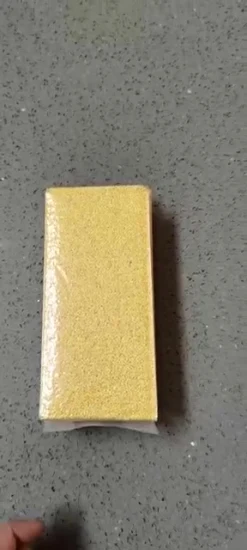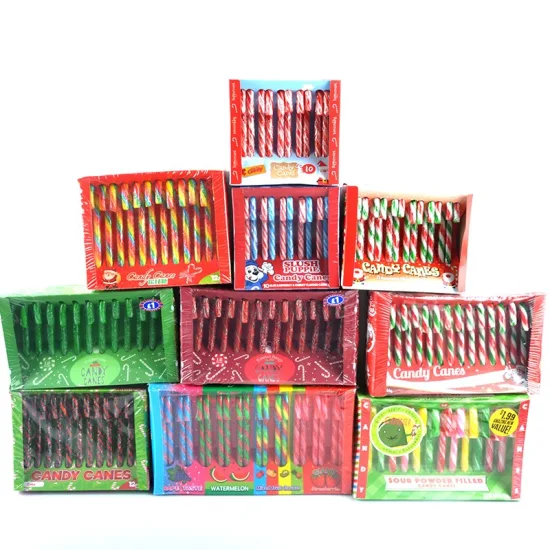
Planting High-Quality Grain Millet in North China, South China and Southwest China
Longshan millet, a specialty of Zhangqiu District, Jinan City, Shandong Province, is a national geographical indication ;
Basic Info
| Model NO. | yellow millet |
| Transport Package | Bags |
| Specification | 10*5*20 |
| Trademark | See outer package for details |
| Origin | China |
| HS Code | 1104299000 |
| Production Capacity | 10000kg |
Product Description
Longshan millet, a specialty of Zhangqiu District, Jinan City, Shandong Province, is a national geographical indication of agricultural products.Longshan millet is one of the four tribute rice in history. It is said that there has been "Longshan millet" since the "Longshan culture", which began to pay tribute during the reign of Emperor Qianlong of the Qing Dynasty. "Longshan millet" is rich in nutrition. According to the test, it contains 5.26% fat, 2% higher than other millet; 10% protein; The contents of vitamin A, vitamin B1 and vitamin B2 are also higher than other millet. Therefore, people regard it as a good product to respect the elderly, feed young children and nourish the body. "Longshan millet" is mainly produced within ten miles around Longshan Village. It is all spring sowing in dry fields. It is a pollution-free food without watering or applying chemical fertilizer. It uses more farm fertilizer and cake fertilizer.
On December 24, 2010, the Ministry of agriculture of the people's Republic of China approved the registration and protection of geographical indications of agricultural products for "Longshan Xiaomi".
Product features
Fold external senses
Longshan millet seeds are large, round, golden in color, sticky and fragrant, rich in nutrition, and higher in nutrient content than other varieties. Especially when cooking porridge, there is a layer of yellow rice oil on the surface. It tastes delicious. It is a good tonic food for pregnant women and the elderly.
Folding intrinsic quality
Millet is rich in nutrition, rich in protein, vitamins and trace elements such as calcium, phosphorus, iron, manganese and zinc. The quality of Longshan millet was determined by the laboratory of physiology and biochemistry, Chinese Academy of Agricultural Sciences. The results showed that the fat content was 4.98%, the protein content was 10.82%, the crude starch content was 74.95%, and the lysine content was 0.25%.
Folding medicinal value
Xiaomi's main effect is to replenish the spleen and stomach. Millet has the effect of preventing stomach bleeding and vomiting. Millet is helpful for diarrhea, vomiting, indigestion and diabetes. Millet can also relieve halitosis, reduce the growth of bacteria in the mouth, and cure beriberi, neuritis and leprosy, insomnia, headache, mental fatigue, skin "oil", increased dandruff and other symptoms.
Millet has a nourishing effect on the frail and sick elderly. Cereals are very helpful to the elderly. Eating millet often can be beneficial to the health of the five internal organs, fill body fluid, strengthen muscles and bones and grow muscles.
Millet is rich in dietary fiber, four times that of rice. Rich dietary fiber can promote fecal excretion. Millet can also be used as a food therapy and health care product for sedation and sleep.
Millet porridge is not only delicious, but also nutritious and comprehensive. It has the effect of tonifying kidney qi and benefiting waist and knee. In particular, the rice oil in millet porridge has very good nourishing effect, which is equivalent to the nourishing effect of rare medicinal materials such as ginseng and rehmannia. In the collection of compendium of Materia Medica written by Zhao Xuemin in the Qing Dynasty, it is recorded that rice oil "those who eat black and thin will be fat and white in a hundred days. It is better to nourish Yin than cooked land. One bowl can be skimmed every day, and light clothes are the best". Wang Mengying, a medical scientist in the Qing Dynasty, believed that "rice oil can replace ginseng soup" in his diet Manual of suixiju, because it has the same effect of tonifying vitality as ginseng. It should be noted that in order to obtain high-quality porridge oil, the pot used for cooking porridge must be cleaned without oil stain. It's best to cook slowly over a low heat, and no seasoning can be added. In addition, millet can also cook porridge with beans. Cook millet, purple rice, Corn Brown, red beans, mung beans, peanut beans and red dates until they are sticky.
Origin environment
Folding soil landform
Zhangqiu District, Jinan City, Shandong Province has various landforms, including hills, plains and Yellow River beach from south to north. The formation of its good quality is inseparable from its geographical environment and soil conditions. Longshan millet producing area Longshan area is a Piedmont proluvial soil with deep soil layer, yellow soil and fertile texture. According to the measurement, the content of organic matter is 1.32%, total nitrogen is 0.075%, total phosphorus is 0.082%, alkali hydrolyzable nitrogen is 67 mg / kg, available phosphorus is 24 mg / kg, available potassium is 93 mg / kg, and the soil replacement amount is 18.2 mg / 100g, which is very suitable for millet growth.
Hydrological conditions
Zhangqiu District, Jinan City, Shandong Province has superior water conservancy conditions, sufficient underground water sources, supporting farmland drainage and irrigation facilities, clear water quality and no pollution, which fully meets the requirements of irrigation in drought and drainage in flood.
Folding climate
Zhangqiu district has a warm temperate semi humid monsoon climate, which is characterized by mild climate, four distinct seasons, cold in winter, little rain and snow, dry and windy in spring, hot and rainy in summer, cool weather and large temperature difference in autumn, which is conducive to the growth and development of crops.
Light: the area is rich in light resources, long sunshine time and sufficient light, which is conducive to the light and function of crops. The annual average sunshine hours are 2647.6 hours, accounting for 56% of the annual sunshine time.
Temperature: the annual accumulated temperature is 4580 ºC, the average temperature is 12.9 ºC, the highest temperature in July is 32.1 ºC, and the lowest temperature in January is - 3.2 ºC. The frost free period is about 210 days, and the natural farming period is about 290 days. Cool at night and large temperature difference between day and night are conducive to crop nutrient accumulation.
Water: the precipitation is relatively small. Because it is concentrated in summer, the average annual variation is large, and the precipitation is unstable, with an average precipitation of 600-630mm. Superior natural geographical conditions, suitable soil and climate provide an ideal natural environment for the development of millet industry.
historical origin
As early as 9500 years ago, Longshan ancestors began to breed and domesticate wild "Dogtail grass", and then cultivated ancient corn. After thousands of years of cultivation, Longshan millet was formed. In history, Longshan Xiaomi, together with the "golden rice" in Jinxiang County, Shandong Province, the "Qinzhou yellow" in Qinxian County, Shanxi Province and the "peach blossom rice" in Yuxian County, Hebei Province, are known as the four famous rice in China.
Longshan millet "East Road is cloudy and dry", that is, when it is cloudy and rainy, its leaves show the characteristics of curling leaves of other crops when it is dry, and became Gongmi in the Qing Dynasty. It is said that Qianlong passed through Zhangqiu on his tour and praised "longmi golden soup" after tasting it: "it's really a silver bowl of golden soup!" And sealed "Longshan millet" as tribute rice.
The representative brands of Longshan millet such as "shirenpo", "pinglingcheng", "chengziya" and "Longshan County" have also been brilliant. However, because some regions also use Longshan millet for brand sales, the brand of "Longshan millet" has been affected because of its uneven quality.
In 2017, Longshan sub district office decided to build a 1000 mu Longshan millet planting base in Pingling ancient city, correct the name of Longshan millet with authentic millet and reshape the brand image of Longshan Gongmi.
In 2018, Jinan implemented ten actions for industrial revitalization, focusing on the construction of two standardized planting bases of 10000 mu Longshan millet, with Zhangqiu Longshan and Changqing Xiaoli as the center.
geographical indication
Folding area protection scope
The regional protection scope of Longshan millet is Zhangqiu District, Jinan City, Shandong Province. The geographical coordinates are 117 ° 10 ′ 00 ″ - 117 ° 35 ′ 00 ″ east longitude and 36 ° 25 ′ 00 ″ - 37 ° 09 ′ 00 ″ north latitude. It is 70 kilometers long from north to South and 37 kilometers wide from east to west, with a total area of 185500 hectares, mainly involving Longshan sub district office of Zhangqiu District, seven townships (sub district offices) in the south, including Shengjing, Bu Village, Wenzu, Cao fan, duzhuang and Guanzhuang, and 321 administrative villages. According to historical records, it is most famous for the 400 mu of shirenpo in Longshan Village, Longshan street.
Technical requirements for folding quality
(1) Origin selection and special content regulations: millet is resistant to barren growth, and generally does not need large fertilizer and water. Longshan millet should be produced in piedmont alluvial plain. The formation of good quality of Longshan millet is inseparable from its geographical environment and soil conditions. Longshan millet is produced in Longshan area. The soil in Longshan area is Piedmont proluvial soil with deep soil layer, yellow soil and fertile texture. In addition, its geographical environment and climatic conditions are more suitable for the growth and development of millet, which is a superior condition for the formation of good quality of Longshan millet. According to the determination, the soil nutrient content in this area is: organic matter 1.32%, total nitrogen 0.075%, total phosphorus 0.082%, alkali hydrolyzable nitrogen 67ppm, available phosphorus 24ppm, available potassium 93ppm, and the soil replacement amount is 18.2 mg / 100g. The soil physical properties are good, the total porosity is 60.7%, the capillary porosity is 37.1%, the aeration porosity is 23.1%, and the maximum field water capacity is 28.8%. According to the test results of soil physical and chemical properties in this area, its physical and chemical properties are obviously better than those in other places. Therefore, this is also one of the important conditions for the formation of good quality and variety of Longshan millet.
(2) Variety selection and specific requirements: Longshan millet is the general name of farm variety groups in Longshan area of Zhangqiu. It is a unique variety formed under certain natural conditions and suitable for regional environmental conditions. The growth period of the main variety "East Road cloudy and dry" is about 120 days, with a plant height of 1.6 meters and no lodging; The spike is cone-shaped, with purple bristle, medium wide leaf shape and thick green leaf color. It is called "East Road cloudy and dry" because the leaves show the characteristics of leaf curl when other crops are dry in cloudy and rainy days. The average ear weight is 18-20g, the ear grain weight is 11-12g, the general yield is 200-250kg per mu, and the rice yield is about 80%.
(3) Production process management, including special regulations on the use of agricultural inputs: the production process of Longshan millet includes several growth periods such as land preparation, sowing, field management and harvest.
(1) Fine land preparation is based on winter ploughing (ploughing depth of more than 20cm) and winter harrow. When the ground surface just thaws in spring, the top Ling harrow shall be carried out to loosen the topsoil and improve the land preparation quality. At the same time, in combination with deep tillage, the base fertilizer should be applied during deep tillage in the previous year. The application in autumn is better than that in spring. 1000 kg of rotten pig manure can be applied per mu at the end of October last year.
(2) Timely and early sowing is the key measure to prolong the growth period, increase yield and improve quality. Because the quality of this variety is greatly affected by the length of growth period, the growth period is about 120 days, its aroma is the strongest and its quality is the best. It is appropriate to sow in spring with grain rain and in autumn with grain in ear. Sowing amount: 0.3KG per mu; Sowing depth 3-5cm.
(3) One week before seed treatment and sowing, the seeds shall be spread on the grass mat on a sunny day, about 2-3cm thick, and dried for 2-3 days. The germination rate of grain seeds shall reach more than 90%; In order to ensure that the seedlings are neat and strong, the seeds shall be selected with salt water. 3-5 days before sowing, the seeds shall be placed in the salt water with a concentration of 10%, the chaff, grass seeds and impurities floating on the water surface shall be fished out, and then the sunken seeds shall be fished out, washed with clean water for 2-3 times and dried for standby.
(4) Suppression after sowing in order to promote water absorption, early germination, deep rooting and neat emergence of seeds, suppression must be carried out after sowing. Generally, it can be suppressed with seeds, and it can be suppressed by manual foot stepping, From sowing to emergence, the seedlings shall be suppressed 2-3 times according to the soil moisture (once when the seedlings are about to be unearthed to help them emerge; at 2-3 leaf stage, the seedlings shall be suppressed to thicken the stem base, promote rooting and prevent lodging. The suppression is best carried out in the afternoon).
(5) The management of seedling stage shall be conducted in time, and the seedlings shall be fixed. For the plots with lack of seedlings and ridge cutting, the seedlings shall be thinned and transplanted in time after the rain, and the density shall be thinned and supplemented to achieve complete seedlings, neat seedlings, uniform seedlings and strong seedlings. The seedlings were planted during 3 leaves and fixed at 4 leaves, leaving about 50000 seedlings per mu. Planting specification: row spacing 0.45M, broadcasting width 1.1m. Intercropping and weeding: intercropping can be combined with intercropping for the first time, so as to achieve the combination of weeding, soil loosening and seedling enclosure, and then Intercropping in time with rainfall and grass damage.
(6) Management of Ridge Clearing at jointing and heading stage: Ridge Clearing shall be carried out once when the seedling height is 30 cm, and weeds, weak seedlings, sick seedlings and insect seedlings shall be completely removed to make the grain seedlings neat and the seedling feet ventilated and transparent. Intertillage and soil cultivation: millet can be intertillated for 3-4 times in its life, so that "the first time is shallow, the second time is deep, and the third time does not hurt the root". The third intercropping was carried out at booting stage in combination with topdressing, with shallow hoeing of 3-4 cm and high soil cultivation. Irrigation: the water demand increases after jointing, and it should be watered in time in case of drought.
(7) Management at flowering and maturity stage during this period, the main direction of field management is to attack grains, prevent premature senescence and reduce chaff. Therefore, in case of drought, water gently to make the ground moist; After flowering, the root activity decreases, so we should pay attention to drainage and loosen the soil for ventilation.
(8) The disease of millet is light; The main pests are armyworm and aphid, and the control can be carried out by manual killing and color board trapping.
(9) Harvest when the bran becomes the color of the variety, the seeds become hard, and the mature "broken green", harvest in time, and pay attention to the selection and retention of seeds during harvest.
Longshan millet hulled millet)
You may also like
Send inquiry
Send now




